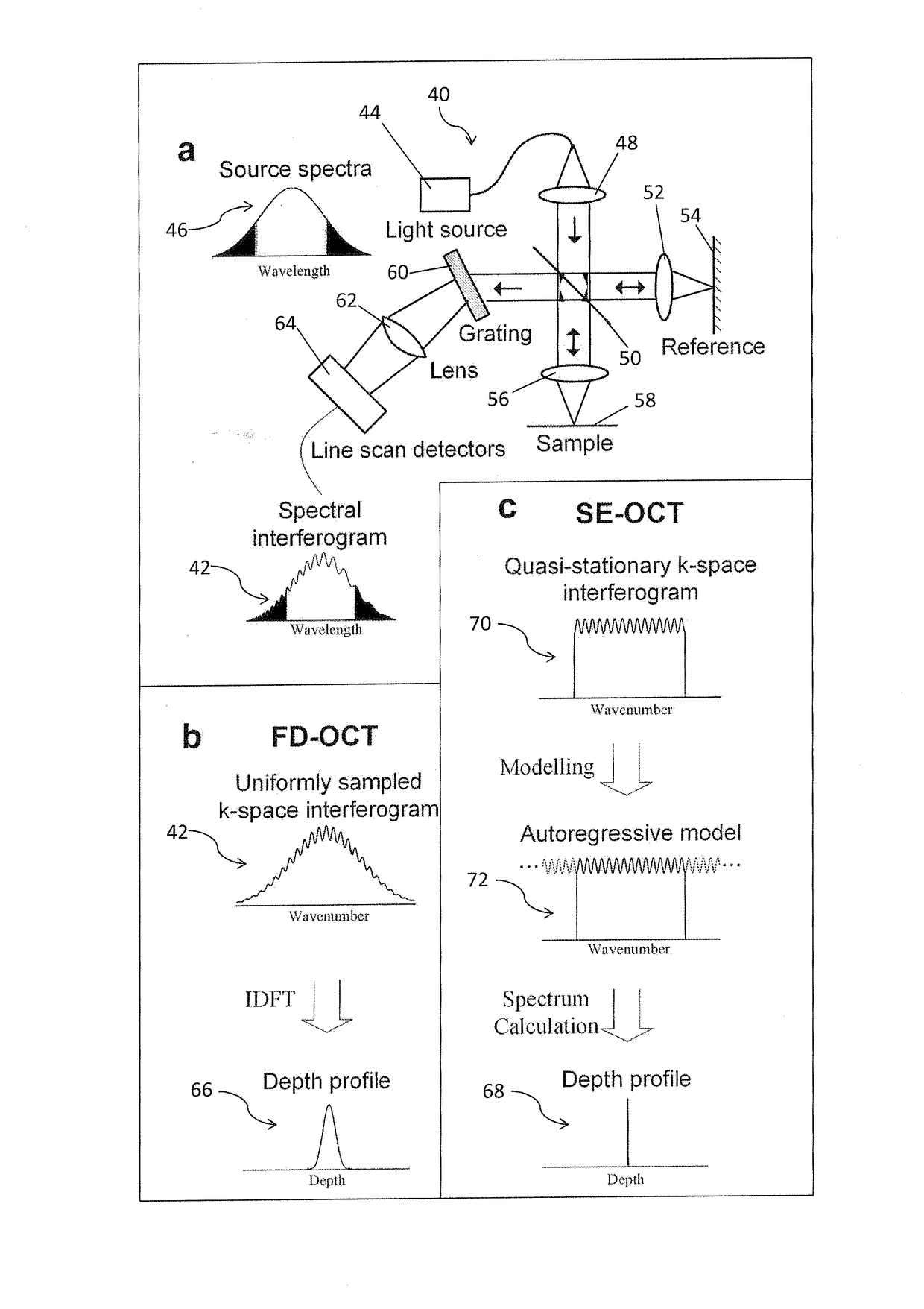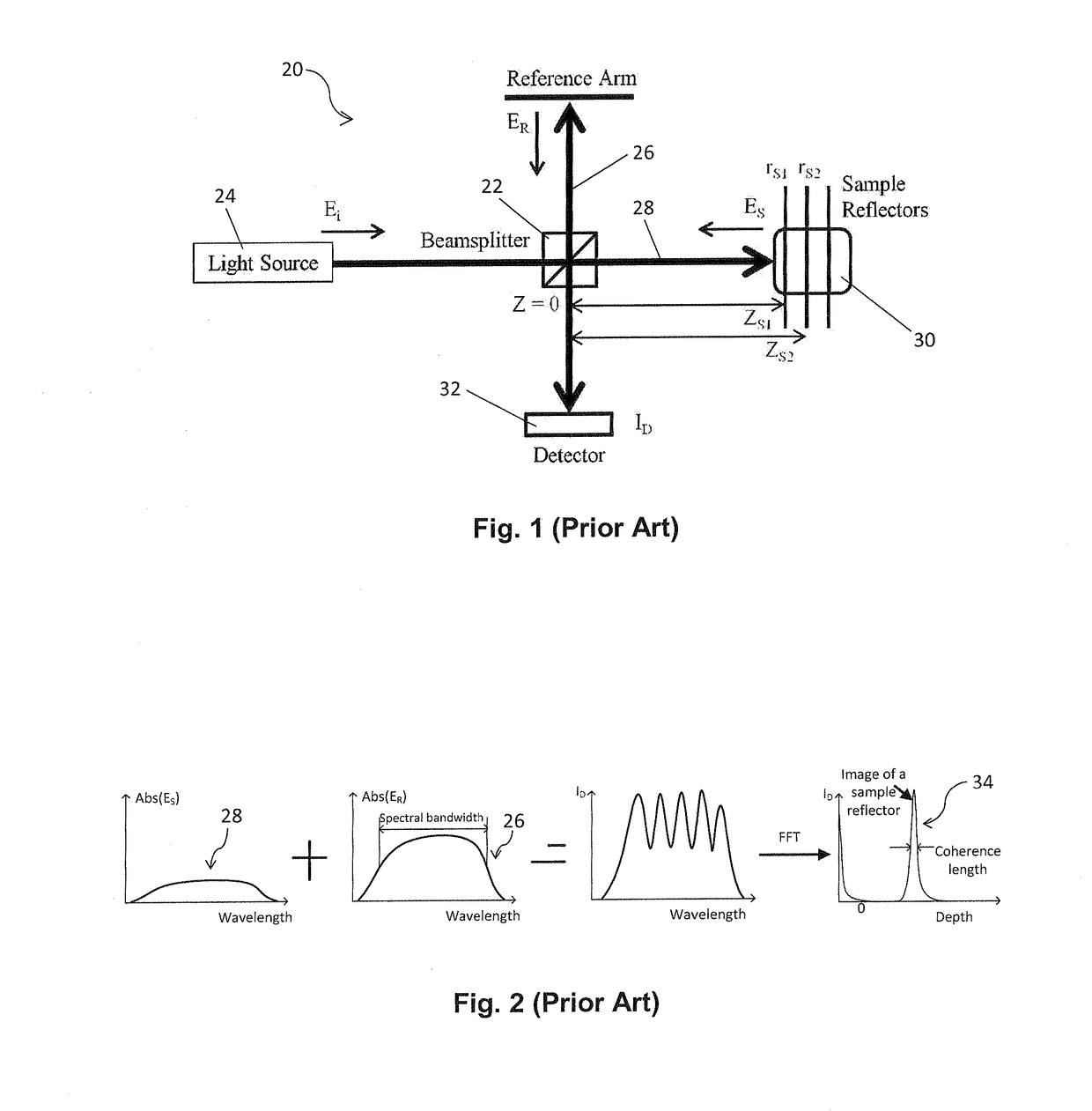Methods to improve axial resolution in optical coherence tomography
a technology of optical coherence tomography and axial resolution, which is applied in the field of methods to improve axial resolution in optical coherence tomography, can solve the problems of limited axial resolution of all current oct technologies, inability to provide cellular and subcellular resolution imaging, and inability to clinically and commercially viable technologies, so as to reduce or eliminate side-lobe artifacts, reduce or eliminate spectrum gaps, and increase the detected spectral bandwidth
- Summary
- Abstract
- Description
- Claims
- Application Information
AI Technical Summary
Benefits of technology
Problems solved by technology
Method used
Image
Examples
Embodiment Construction
Super-Resolution Method
[0081]In accordance with a first embodiment of the present invention there is provided a method 10 to improve axial resolution in OCT, as illustrated in FIG. 3. In particular, the method 10 comprises the following steps:
Step 12: obtain a k-space interferogram of an OCT spectral image;
Step 14: uniformly reshape the k-space interferogram to a quasi-stationary interferogram by extracting a source envelope;
Step 16: fit a spectral estimation model to the quasi-stationary interferogram; and
Step 18: calculate an axial depth profile using the fitted spectral estimation model.
[0082]The method allows the use of modern spectral estimation algorithms in OCT imaging to achieve axial super-resolution, which means axial resolution higher than the coherence length can be achieved.
[0083]The interference signals are modulated by the spectral shape of the light source in OCT imaging. This leads to the interference signals being non-stationary which means that modern spectral est...
PUM
 Login to View More
Login to View More Abstract
Description
Claims
Application Information
 Login to View More
Login to View More - R&D
- Intellectual Property
- Life Sciences
- Materials
- Tech Scout
- Unparalleled Data Quality
- Higher Quality Content
- 60% Fewer Hallucinations
Browse by: Latest US Patents, China's latest patents, Technical Efficacy Thesaurus, Application Domain, Technology Topic, Popular Technical Reports.
© 2025 PatSnap. All rights reserved.Legal|Privacy policy|Modern Slavery Act Transparency Statement|Sitemap|About US| Contact US: help@patsnap.com



